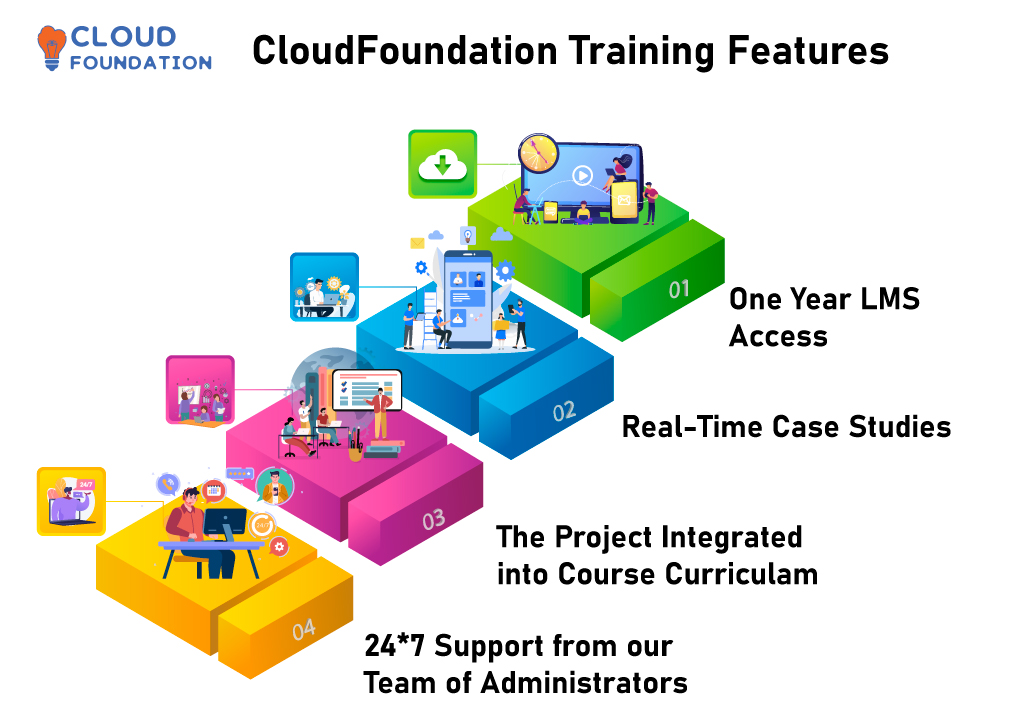Certified Information Systems Auditor CISA Training
Certified Information Systems Auditor CISA Training
⏰24 hours | ▶️ 24 Videos | 📣 9348 Participants | 🎓 4291 Reviews | 4.8 ⭐⭐⭐⭐⭐
Choose a Plan that Works for You
Self Paced
- Advanced sessions
- Interview Q&A
- Free study Materials
- Premium Technical support
Instructor Led Live Training
- Live Instructor
- Advanced sessions
- Interview Q&A
- Premium Technical Support
Corporate Training
- Live Instructor
- Advanced sessions
- Interview Q&A
- Premium Technical Support
Upcoming Batches PST
Weekday
| Oct 09(1 HR A DAY) |
| 07:30 AM IST |
| Enroll Now → |
Weekday
| Oct 31(1 HR A DAY) |
| 06:00 AM PST |
| Enroll Now → |
Weekend
| Oct 25(1 HR A DAY) |
| 06:00 PM PST |
| Enroll Now → |
Upcoming Batches IST
Weekday
| Oct 10(1 HR A DAY) |
| 07:30 PM IST |
| Enroll Now → |
Weekday
| Oct 31(1 HR A DAY) |
| 07:30 PM IST |
| Enroll Now → |
Weekend
| Oct 26(1 HR A DAY) |
| 07:30 AM IST |
| Enroll Now → |
Course Description
Certified Information Systems Auditor Training structures about the works done by IT systems Auditors.
IT structures auditors are those who ensure that those structures are nicely included and capable of characteristics suitably.
The eligible people for taking the CISA Course are:- IT auditors, Compliance executives, Senior compliance officers, Chief risk and Data protection officers, Security heads, and Security managers.
There are mandatory five years of work experience you should need to have before the Learning CISA course.
You need to attend the Classes that teach information systems auditing, control, or security.
The CISA certification stays in call for agencies’ appearance to enhance infosec effect and bridge the cybersecurity abilities gap.
With this Certification in your hand, you can land anywhere in the world with good Career options.

Course Content
1.Information System Auditing Process
1.1 Planning
- IS Audit Standards, Guidelines and Codes of Ethics
- Business Processes
- Types of Controls
- Risk-based Audit Planning
- Types of Audits and Assessments
1.2 Execution
- Audit Project Management
- Sampling Methodology
- Audit Evidence Collection Techniques
- Data Analytics
- Reporting and Communication Techniques
- Quality Assurance and Improvement of the Audit Process
2.Governance and Management of IT
2.1 IT Governance and ITS Strategy
- IT-related Frameworks
- IT Standards, Policies and Procedures
- Organizational Structure
- Enterprise Architecture
- Enterprise Risk Management
- Maturity Models
- Laws, Regulations and Industry Standards Affecting the Organization
2.2 IT Management
- IT Resource Management
- IT Service Provider Acquisition and Management
- IT Performance Monitoring and Reporting
- Quality Assurance and Quality Management of IT
3.Information Systems Acquisition, Development and Implementation
3.1 Information Systems Acquisition and Development
- Project Governance and Management
- Business Case and Feasibility Analysis
- System Development Methodologies
- Control Identification and Design
3.2 Information Systems Implementation
- Testing Methodologies
- Configuration and Release Management
- System Migration, Infrastructure Deployment and Data Conversion
- Post-implementation Review
4.IS Operations and Business Resilience
4.1 Information Systems Operations
- Common Technology Components
- IT Asset Management
- Job Scheduling and Production Process Automation
- System Interfaces
- End-user Computing
- Data Governance
- Systems Performance Management
- Problem and Incident Management
- Change, Configuration, Release and Patch Management
- IT Service Level Management
4.2 Business Resilience
- Business Impact Analysis
- System Resiliency
- Data Backup, Storage and Restoration
- Business Continuity Plan
- Disaster Recovery Plans
5.Information Asset Security and Control
5.1 Information Asset Security Frameworks, Standards and Guidelines
- Privacy Principles
- Physical Access and Environmental Controls
- Identity and Access Management
- Network and End-point Security
- Data Classification
- Data Encryption and Encryption-related Techniques
- Public Key Infrastructure
- Web-based Communication Technologies
- Virtualized Environments
- Mobile, Wireless and Internet-of-things Devices
5.2 Security Event Management
- Security Awareness Training and Programs
- Information System Attack Methods and Techniques
- Security Testing Tools and Techniques
- Security Monitoring Tools and Techniques
- Incident Response Management
- Evidence Collection and Forensics
